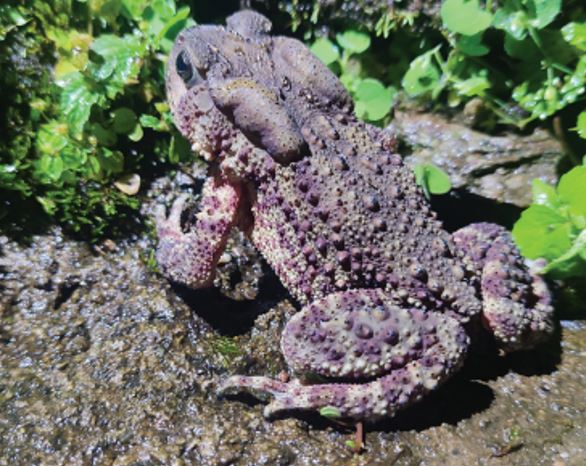- Wednesday, 19 November 2025
New reptile and amphibian species recorded in Annapurna Region
By Yadu Prasad Bhatta.Manang, Nov. 19: A recent scientific study in the Annapurna Conservation Area (ACA) has identified four species of reptiles and amphibians previously unrecorded in Nepal.
According to a report released by the Annapurna Conservation Area Project (ACAP) under the National Trust for Nature Conservation (NTNC), researchers documented a total of 91 species in the area. The discovery of these four newly listed species further highlights the ecological significance of the ACA and underscores the need for continued conservation efforts.
Of the recorded species, 61 are reptiles and 30 are amphibians, belonging to 15 families. A book co-authored by researchers Rishi Baral and Dr. Rabin Kadariya said that 13 species fall under amphibian families and 25 species under reptile families.
The findings also highlighted ACA’s significant contribution to biodiversity research and opened new opportunities for herpetological studies in Nepal. Of the three herpetofauna species prioritised for national protection by the Government of Nepal, one has been confirmed to occur within ACA. Similarly, five species found in ACA are listed under CITES.
Although two species were excluded from previous lists due to confusion over scientific names and distribution, new observations indicate that species diversity within ACA is even broader than earlier documented. Among the 61 reptile species, 23 are lizards belonging to the skink, gecko and lacertid groups, while 38 are snakes.
Research carried out in the high-altitude zones of ACA in recent years has revealed four species recorded in the country for the first time -- the Boulenger’s High-altitude Toad, the Mustang Frog/Rostand’s Hill Frog, the Annapurna Bent-toed Gecko and the Himalayan Pit Viper.
According to researchers, the Annapurna Conservation Area is among the country’s most biologically rich regions. Its varied landscapes, elevation range, climatic diversity and limited human disturbance provide ideal habitats for reptiles and amphibians.
They added that with more systematic field surveys, advanced monitoring techniques and stronger community participation, the discovery of additional species in the future is highly likely.















